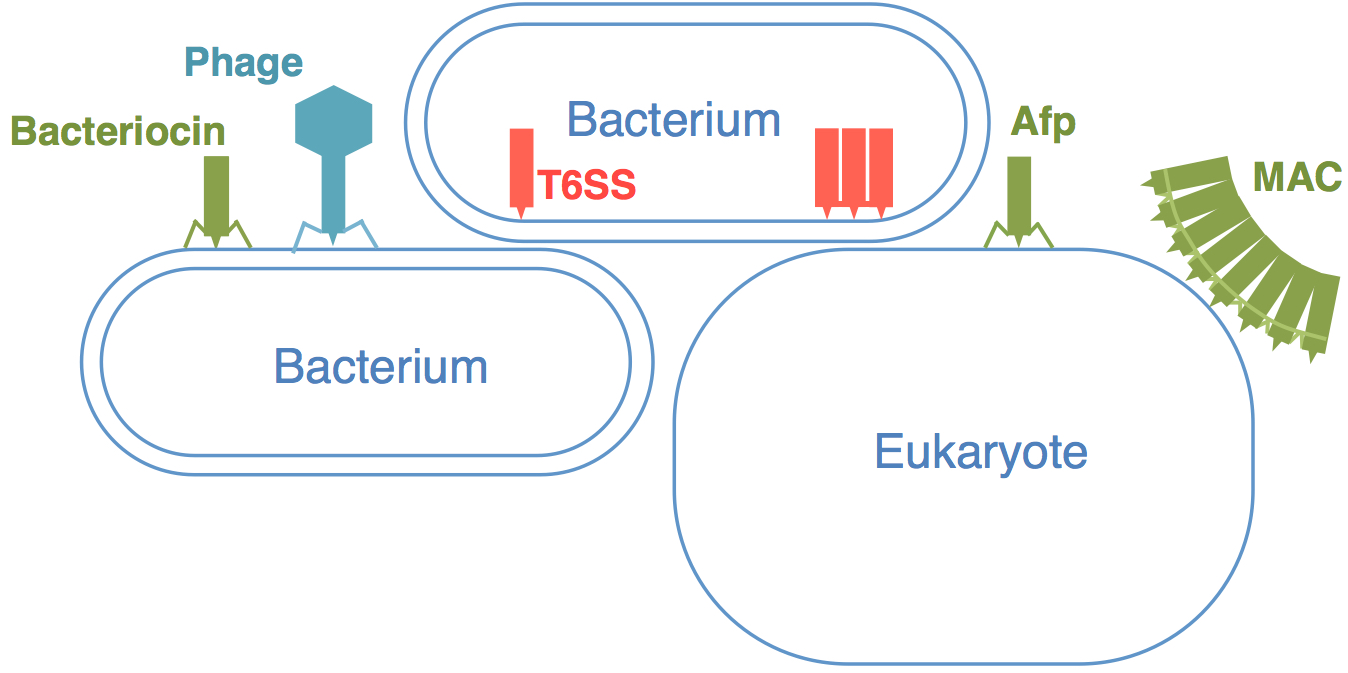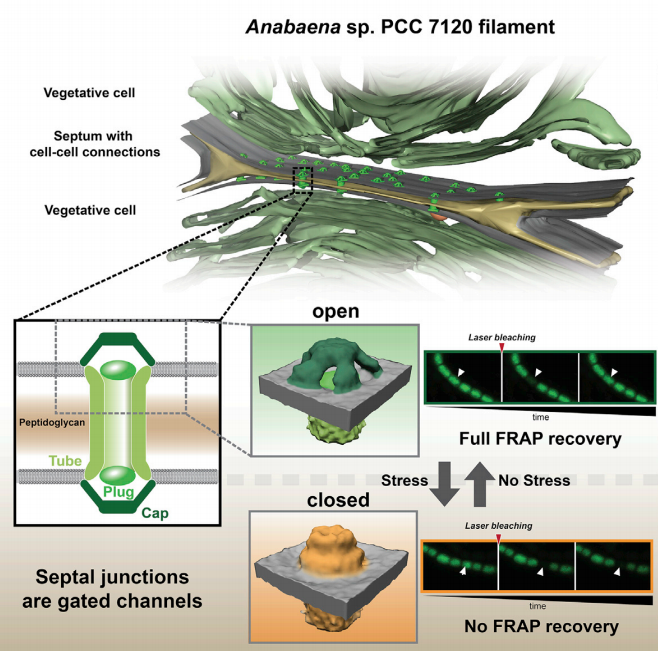Bacterial cell-cell interactions
Bacterial contractile injection systems (CISs)
Our main focus lies on bacterial contractile injection systems (CISs). These macromolecular machines have a last common ancestor with contractile bacteriophages. CISs are highly abundant and mediate diverse interactions with eukaryotic cells or other bacteria. Two modes of action divide CISs into extracellular CIS (Figure, green) and Type 6 Secretion systems (Figure, red).
Extracellular CIS resemble headless phages, are released from a subpopulation of cells by cell lysis, and act on their target cell surface. Examples are antibacterial R-type bacteriocins, insecticidal antifeeding prophages (Afps), or metamorphosis-inducing arrays of contractile structures (MACs).
Type 6 secretion (T6SS) systems function as inverted contratile phage tails in a cell-cell contact-dependent fashion.
Read our Publications for more details.

Other types of cell-cell interactions
Besides contractile injection systems, we study other cell-cell interactions such as cyanobacterial septal junctions, bacterium-host interactions of human pathogens, and membrane vesicle formation.
Read our Publications for more details.

